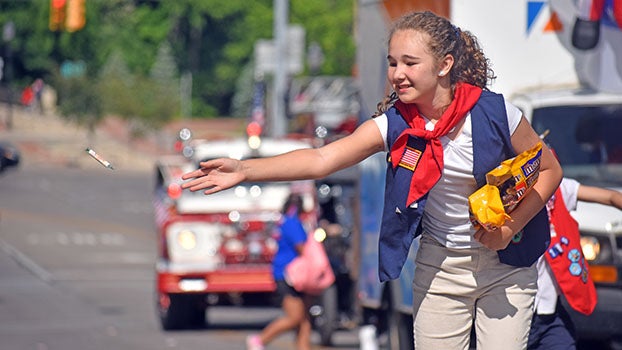POW talk fills lecture hall
Published 8:07 am Friday, May 4, 2012

Prisoners of war worked on farms or found their niches repairing tractors, trucks and even weapons, as well as mending uniforms.
Half a million German prisoners of war (POWs) helped short-handed farmers, including those in southwest Michigan, meet labor demands during World War II.
A capacity crowd Wednesday evening moved retired Western Michigan University professor Howard Poole’s Spring Lecture Series-ending talk from the Museum at Southwestern Michigan College into a larger space in adjacent Dale A. Lyons Building.
Berrien County’s first detachment arrived Oct. 2, 1943, when 374 men arrived in Benton Harbor by train and made the Naval Reserve Armory their home.
Banks arranged POW labor, including loans if farms needed them. Some showed up at Van Buren Fairgrounds in Hartford, then returned to Battle Creek after harvest in the fall. A band played to bid them farewell.
A Decatur grower, Harry Becker, not only relied on German POWs, he went to Arkansas and brought 80 Japanese to help with celery and tomato crops.
Coloma accommodated 582 prisoners in 1945. They were also placed in Allegan, Sodus and Mattawan.
Cheap labor
In 1944, POWs powered Dowd Farms, Hilltop Orchards, the William Zech Farm, Burnette Farms in Keeler, the William Prillwitz Farm in Eau Claire, Bronte Vineyards in Keeler, Klett Farms and the Becker and Schuur farms in Decatur.
The Decatur Republican wrote about prisoners working for Harry Becker and George and Jerry Schuur.
The young laborers were said to be good workers who didn’t speak a lot of English — but understood more than they said.
Frantz Jamascek, 29, escaped from the Prillwitz Farm, turned himself in at Hartford, asked a guard to shoot him and eventually threw himself in front of a train.
It was also reported that Walter Goebbels, captured in Italy and sent to Hartford to dig ditches, was the nephew of Dr. Joseph Goebbels, Nazi propagandist.
Harvey Ross said he first heard about the prisoner population through his wife, Janet, the retired Dowagiac school nurse, who had been an exchange student in Germany. While visiting her host sister, a burly man surprised them by saying, “I know where that is” because he had been shot down in North Africa and incarcerated here.
Looking the other way
Despite anti-fraternization rules, audience members reported POWs going to dances in Benton Harbor and hitchhiking to Battle Creek, where the largest area camp was located at Fort Custer until 1945.
Temporary tents were replaced by wood-framed barracks.
Camps originally were concentrated in the South because warm weather meant not having to heat housing, but eventually every state but North Dakota, Nevada and Vermont had POW camps.






